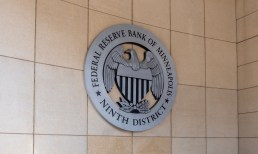It’s a model in which, over the past several centuries, consumers have gone to the branch on an as-needed basis. If you need a mortgage, then you go to the branch, or pick up the phone in a clunky process that is paper-based, needs wet signatures and is time-consuming.
“Going to the bank feels like an onerous experience rather than an enabling one,” Pollinate CEO Herman Spruit told Karen Webster in a Connected Economy discussion.
In the transformation to becoming digital front doors in financial services — where users log into a secure app that offers a continuum of services — banks are lagging the ride-hailing firms of the world, the eCommerce giants, the broad platforms that let consumers access everything from delivery to digital payments on an as-needed, on-demand basis.
But as Spruit said, incumbent FIs have two competitive advantages when it comes to jousting against digital-first and digital-only upstarts.
Those advantages boil down to trust, and the fact that, despite the conventional wisdom that FinTechs and neobanks will eat traditional FIs’ lunches, customer relationships at those same incumbents have proved to be sticky.
Advertisement: Scroll to Continue
Those twin pillars give banks the wherewithal to experiment with their product and service roadmaps without the fear that folks will vote with their feet at their earliest convenience.
“You do trust your bank,” he told Webster. “It is safe because of the regulatory environment and the capital that banks have.”
And, he added, the switching costs are high.
Going Mobile First
That’s not to say that the traditional FIs are not cognizant of the threats posed by asset-light firms, which don’t have to grapple with decades’ worth of legacy systems in place. He said the incumbent players have done an admirable job of embracing “mobile-first” approaches to their customer experiences, where the journey starts with the mobile device, with the app that stands as a digital “front door” to a connected series of interactions.
The pandemic has boosted adoption of mobile banking, which has made it easier for banks to continue to invest in data collection and advanced analytics. There’s some dry tinder underpinning it all, where the data will be the conduit toward creating a tailored experience for banks’ members.
Consumers haven’t given banks permission to use that data, he said. And banks think of data as something else “over here,” siloed in their operations.
“But I think data is actually the new personalization,” he said.
Spruit explained that data is becoming so important, a bank should make sure at least 15 percent to 20 percent of its general management team is “data enabled.” He pointed to the fact that data can be leveraged to speed up loan processes. A mobile phone can offer up an applicant’s address and see, through social media, how friends and family might offer clues to spending patterns (illuminated by account data). Then, a lending decision can be made in just a few seconds.
“You can see my behavioral preferences,” he said. “You can see my priorities in my life stage and even suggest ‘next best’ actions, whether they’re saving actions, whether they’re spending ones, whether they’re buying now, paying later ones.”
Data creates ecosystems where boundaries are ever expanding.
Pivoting
Traveling with the consumer across various stages of their respective financial journeys would represent a marked strategic about-face for FIs, said Spruit.
He noted that banks have historically made money largely on the errors and omissions of their customers, such as when they overdraw on their accounts or take out loans that may not have the most advantageous interest rates.
Pivoting to a proactive approach in which the FI presents those aforementioned timely and relevant offers and suggestions to users for their consideration, may be a bit of a sea change.
Take buying a home, for example, he said. The process necessitates a range of services — perhaps a remodel or development, security, even finding agents or mortgages. An ecosystem can be fashioned that takes the consumer step by step through the process, from beginning to end.
Done well, the fully formed, tech-enabled financial services interaction powered by application programming interfaces (APIs) and platforms can take a page from Alibaba’s book, where 3/10/0 means a three-minute online application gives rise to a one-second decision (informed by data points such as mobile phone geolocation and social media that establishes the legitimacy of the applicant), and there are zero manpower hours spent in processing the decision, he said.
There is, admittedly, some heavy lifting involved for banks to get to that level of speed and automation, Spruit said. It’s been difficult to integrate several tech stacks to get a single, unified view of the customer.
But when banks do synthesize their data collection and analysis (with partnerships with firms such as Pollinate), they can focus on the view that does begin to take shape. They gain insight into the size of the customer’s family, how much they earn, what their banking behaviors might be — all of which can hint at the financial priorities and life stages of that customer.
He pointed to the Commonwealth Bank of Australia (CBA), where, for example, mobile apps can tell mortgage applications what a house is worth, who last bought it, what the applicant’s income can comfortably support, and which mortgage advisors might be at the ready to discuss it all.
The user may be hesitant to fully embrace a bank-led interaction, but they’ll get there, suggested Spruit.
“Banks have got hundreds of thousands of merchants, millions of consumers,” he said, adding that “they’ve got 8 million consumers on their app.”
Most countries have three or four big banks. So, by and large, they have 20 odd percent market share each.
“You’re going to have to make a heck of a lot of mistakes to have that taken away,” he told Webster.
Of those bank-led journeys, some of the banks doing it themselves and some of the FinTechs and neobanks are actually making it easier or setting examples for FIs to follow, he said.
Compliance and regulations may be viewed as an innovation impediment for banks, but banks need to be proactive when it comes to oversight, he said.
“Don’t be a victim,” he advised. “Work with the regulators. Show them why it’s safe, show them why you’ve got the data.”
If banks don’t do that, they run the risk of becoming mere utilities, while the customer service (and new users) go to someone else.
As Spruit told Webster, the banks that think more deeply about the holistic journey — “and no longer think, ‘Oh, I’m going to create some great product, and then we’ll throw it over the wall for some branch manager to sell to his local customers’” — will be in a good position to build a new and robust ecosystem.



